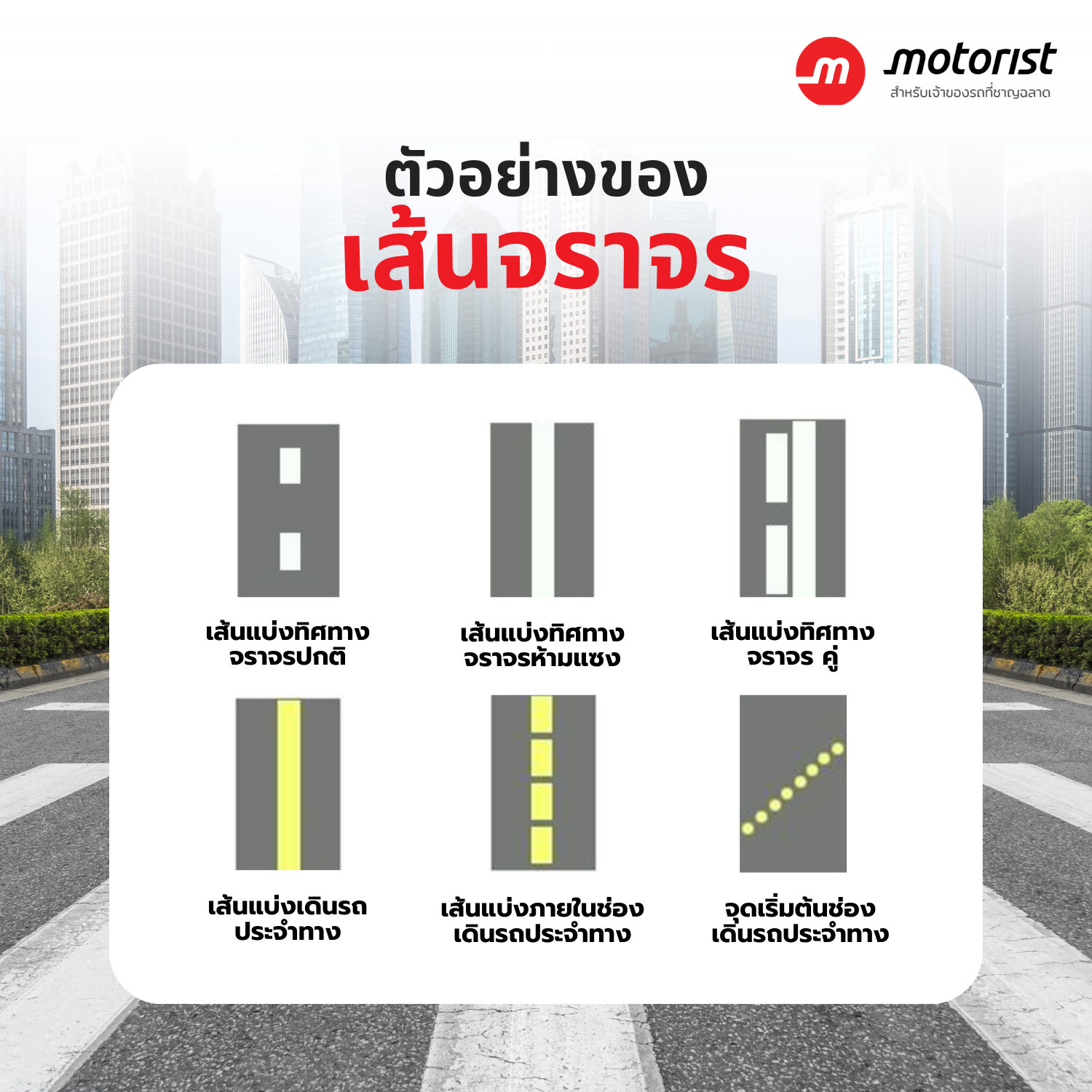Traffic Signs in Thailand You Should Know for Safe Driving

(Photo Credit: freepik)
Every traffic sign has a meaning that helps drivers understand the situation ahead and know how to respond. This ensures smooth and safe driving.
What are traffic signs?
Traffic signs or road signs are symbols used to regulate traffic and ensure the safety of road users. These include direction signs, parking signs, warning signs, prohibitory signs, and more.
Therefore, all road users should always observe these signs or symbols and strictly follow them to reduce the chance of accidents. Let's take a look at the meanings of various traffic signs.
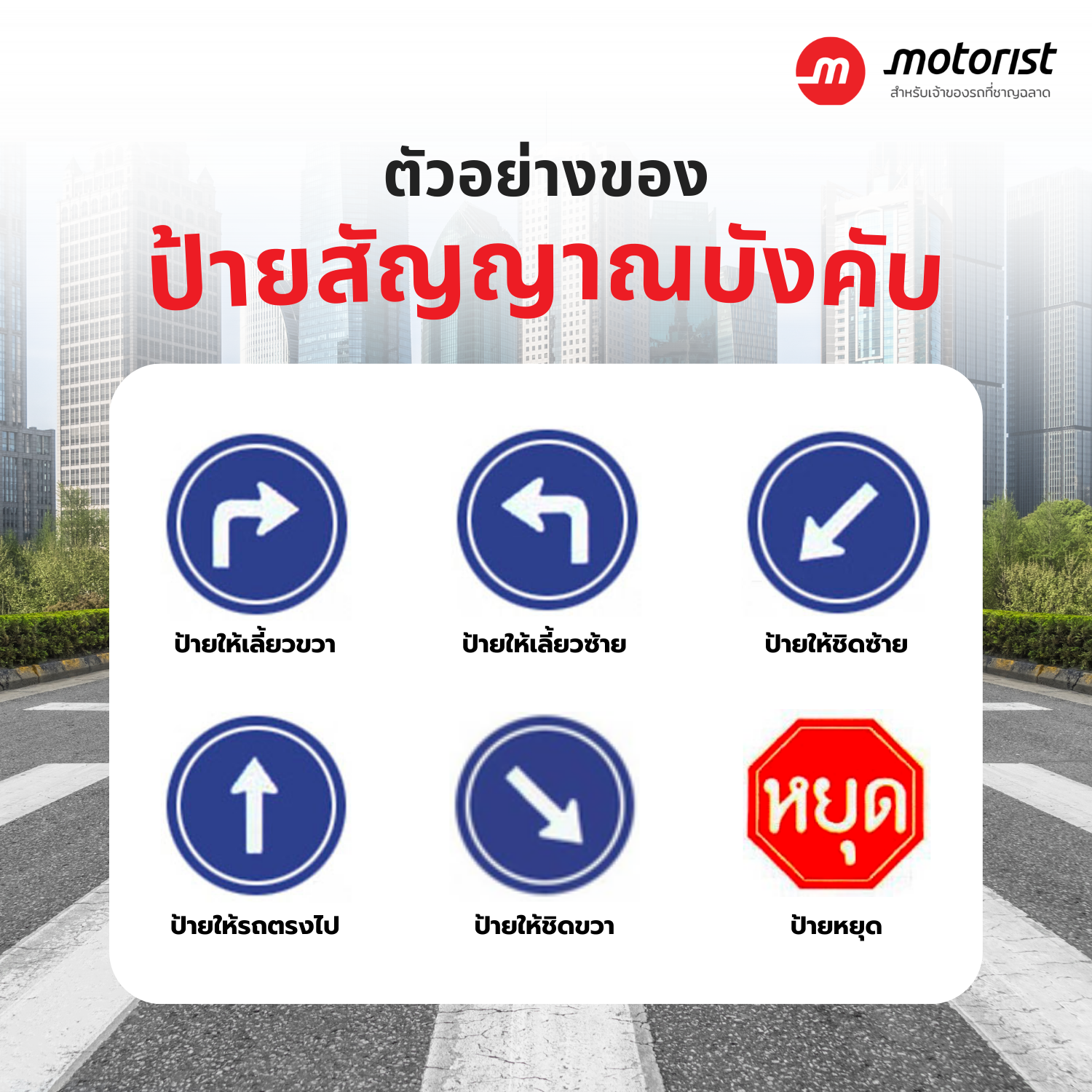
Mandatory Signs
Mandatory Signs Mandatory signs are designed to inform drivers of the actions they must take to ensure correct and safe driving. These signs are typically circular and feature symbols or letters in the center of the sign.
Examples of mandatory signs include:
- Left Turn (a white arrow pointing left on a blue background)
- Right Turn (a white arrow pointing right on a blue background)
- Straight Ahead (a white arrow pointing upward on a blue background)
- Keep Left (a white arrow pointing left on a blue background with a white strip on the right side)
- Keep Right (a white arrow pointing right on a blue background with a white strip on the left side)
- U-Turn Permitted (a white arrow pointing upward and then downward on a blue background)
- Stop (an octagonal sign with a red background and white border, with "STOP" written in both Thai and English)
- Speed Limit (a circular sign with a white background and red border, with a number inside indicating the maximum speed limit in kilometers per hour)
Important: Drivers must pay attention to these mandatory signs as they are "compulsory" signals. Failure to comply with these signs may result in accidents or fines.
Recommendation: Mandatory signs in Thailand may be written in both Thai and English. Therefore, it is recommended that drivers familiarize themselves with both languages to correctly understand the signs.
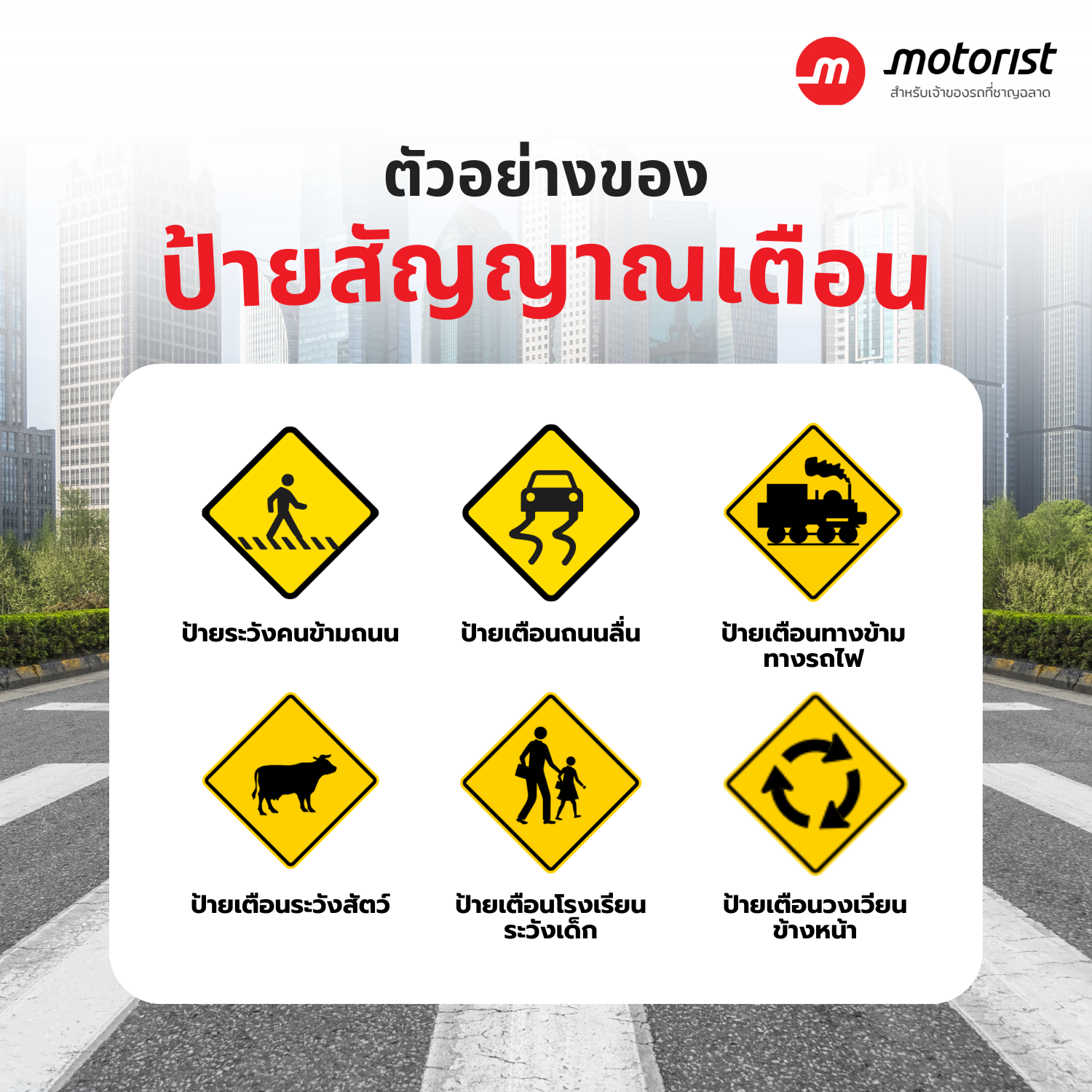
Warning Signs
Warning signs are designed to alert drivers to changes in the road and traffic conditions ahead. These signs typically have a red border and a yellow background.
Examples of warning signs include:
- Slippery road ahead (depicted by a car skidding)
- Steep hill ahead (a car climbing a hill)
- Pedestrian crossing (image of people walking)
- Narrow road ahead (two arrows converging)
- Roadwork ahead (image of a person digging)
- Animal crossing (silhouette of an animal)
- Traffic lights ahead (depicted by traffic signal lights)
- Railway crossing (image of train tracks)
- Children crossing (image of two children holding hands)
- Falling rocks ahead (image of rocks falling from a cliff)
Important: Drivers must pay attention to these warning signs and drive appropriately for the safety of themselves and others on the road.
Recommendation: Drivers should familiarize themselves with various warning signs to understand their meanings before driving on actual roads. This ensures safety and efficient driving, avoiding any hindrance to others on the road.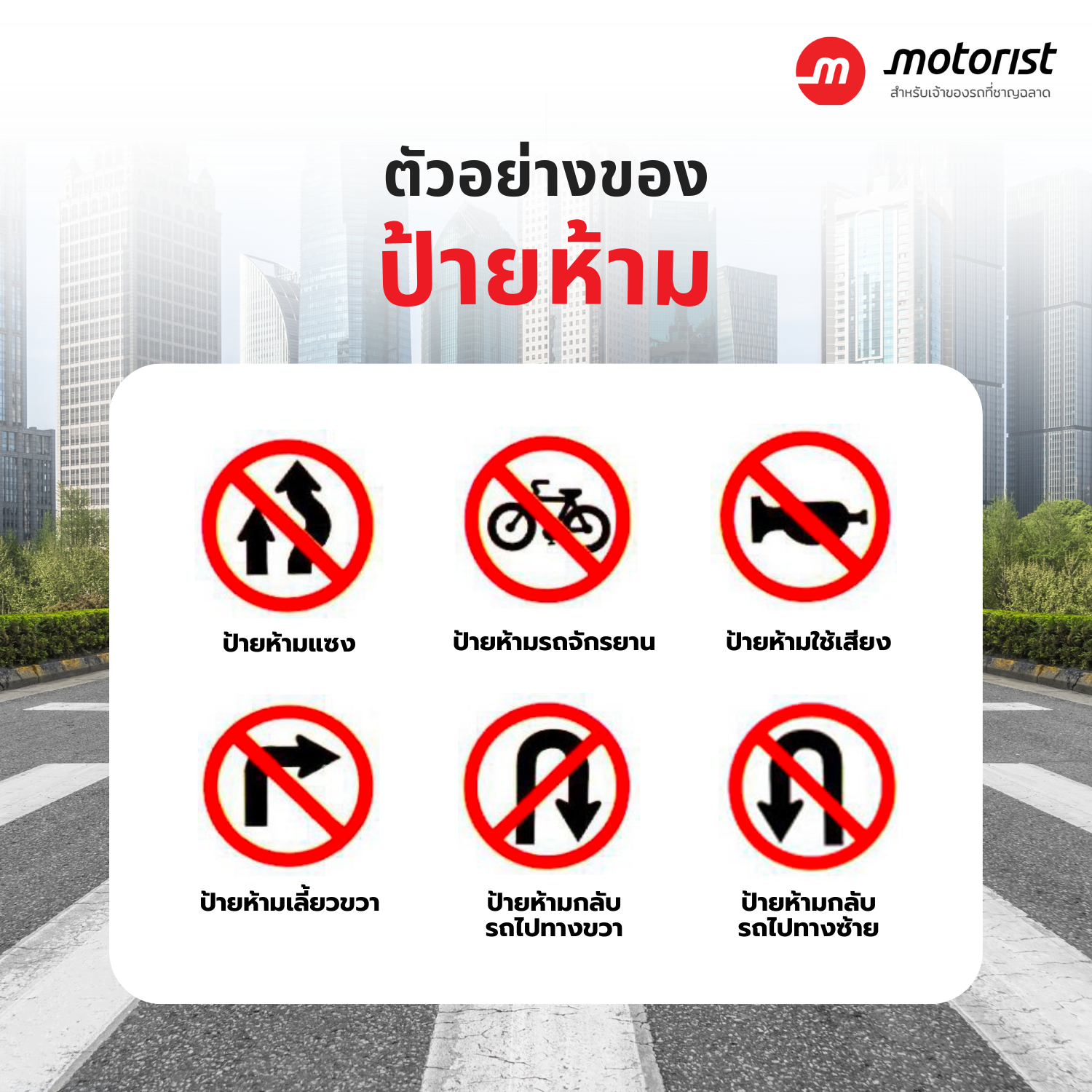
Prohibition Signs
Prohibition Signs Prohibition signs are designed to prohibit certain actions on the road at that location. These signs are typically circular with a red border and have a symbol or text in the center of the sign.
Prohibition Signs Here are some examples of prohibition signs:
- No U-turn (indicated by a U-turn arrow with a red diagonal line across it)
- No left turn (indicated by a left-turn arrow with a red diagonal line across it)
- No right turn (indicated by a right-turn arrow with a red diagonal line across it)
- No overtaking (depicted by a vehicle with a red diagonal line across it)
- No horn blowing (depicted by an animal silhouette with red fangs through it)
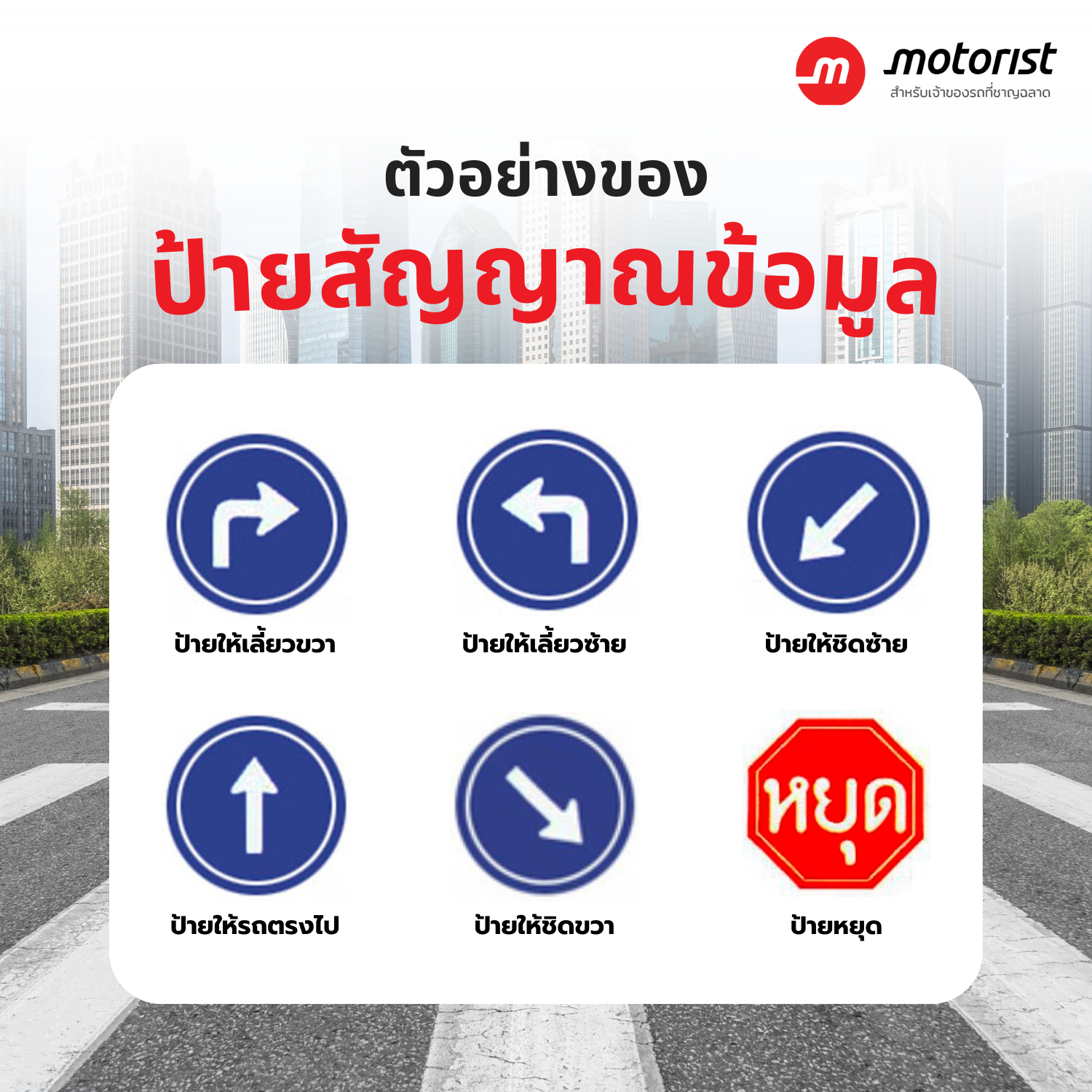
Information Signs
Information signs are designed to provide information to drivers for convenience and to prepare them for destinations. These signs typically have a rectangular shape and are colored blue or green.
Examples of information signs include:
- Hospital ahead (sign depicting a hospital)
- Gas station ahead (sign depicting a gas pump)
- Rest area ahead (sign depicting a picnic table)
- Tourist attraction ahead (sign depicting a camera)
- Airport ahead (sign depicting an airplane)
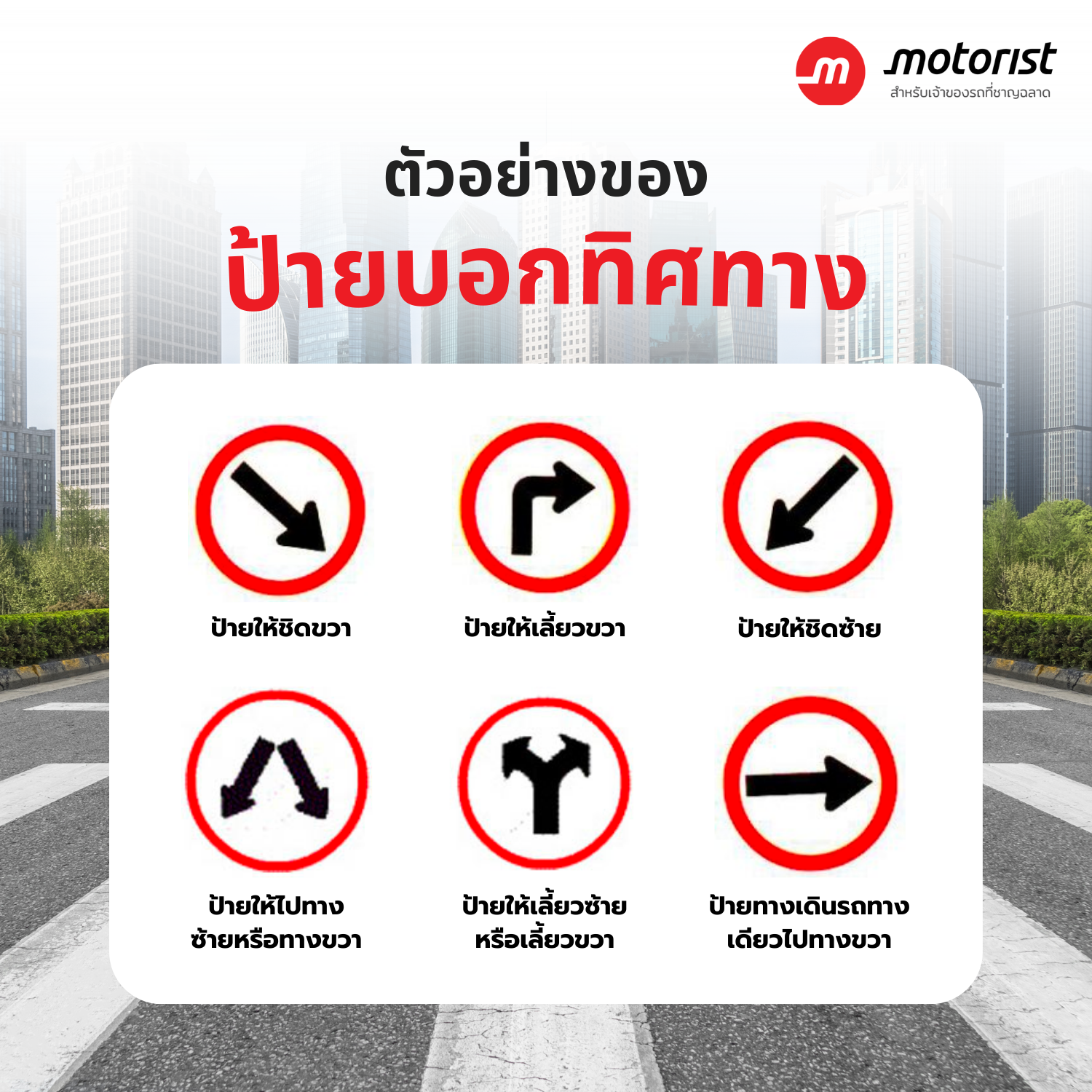
Direction Signs
Direction signs are crucial for drivers as they indicate the direction they should follow on the road ahead. Examples of direction signs include:
- Straight ahead (arrow pointing upwards)
- Turn left (arrow pointing to the left)
- Turn right (arrow pointing to the right)
- Keep left (arrow pointing left with a curve)Keep right (arrow pointing right with a curve)
Road Markings
Road markings are essential signs painted on the road surface that provide information about lane divisions, turning restrictions, lane changes, and parking regulations. Drivers should pay close attention to these markings to prevent road issues, including accidents or fines.
- Solid white line: Separates lanes of traffic moving in the same direction. Generally, crossing this line is prohibited.
- White dashed line: Separates lanes of traffic moving in the same direction. Crossing this line is allowed when it is safe to do so.
- Solid yellow line: Separates lanes of traffic moving in opposite directions. Generally, crossing this line is prohibited.
- Yellow dashed line: Separates lanes of traffic moving in opposite directions. Crossing this line is allowed when it is safe to do so.
- Double solid white lines: Barrier between lanes of traffic moving in the same direction. Crossing these lines is strictly prohibited.
- Zebra crossing: Marked with alternating black and white stripes. Drivers must stop to allow pedestrians to cross at zebra crossings.
- Stop line: Solid white line indicating vehicles must come to a complete stop at intersections or traffic lights.
- Yield line: White dashed line indicating vehicles must yield to traffic or pedestrians entering the road or intersection.
- Chevron markings: Diagonal white lines on the road indicating a sharp turn or bend ahead. Drivers should reduce speed and proceed with caution.
- Bicycle lane markings: Designated lanes for bicycles, typically marked with solid white lines and bicycle symbols. Motorists should avoid driving or parking in these lanes.
Important Note: Besides understanding the road signs, visitors must have essential documents when driving legally in foreign countries. These documents include an International Driving Permit (IDP).
*An International Driving Permit (IDP) is a document used to confirm identity, enabling the holder to drive legally in foreign countries.
Recommendation: If visitors know they will be traveling abroad, it is advisable to apply for an IDP before coming to Thailand. This ensures confidence that they can legally drive while abroad.
Before starting to drive on the roads, drivers should understand the local traffic rules and regulations of that area. Learning the meanings of various traffic signs is crucial for drivers, enabling them to drive correctly and safely, whether they are locals or tourists.
Claim your free car valuation today!
Read More: Why should everyone learn to drive?
Looking for a car appraisal? You can contact us for a free car valuation within 24 hours…
